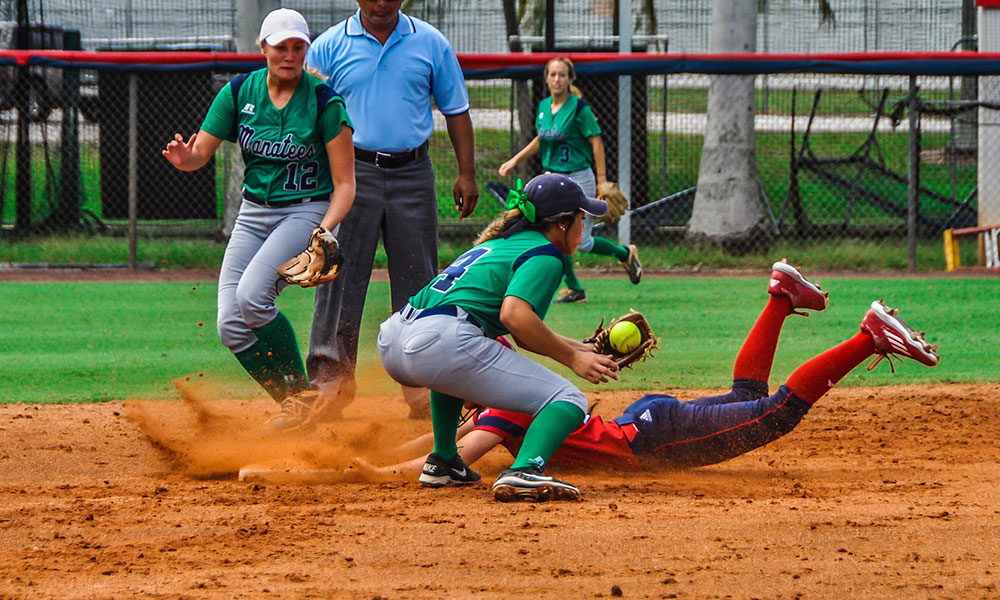Five Important Keys Notes to Executing a Run Down

If you’ve played softball you have probably been involved in a run-down, a pickle, or an oh crap moment where you are stranded in the middle unable to get back or to your base. Base runners involved in a run down’s job is to keep moving and draw as many throws as possible by the defense. It has been proven that the more throws made by the defense, the greater the chance that the runner will make it to a base safely. Think about it, more throws increase the chance of an error or a bad throw occurring. Also the longer the base runner stays in the rundown, this puts more pressure on the defense creating at times, uncharacteristic mistakes under pressure.
Run downs take place at every age level in softball. Below are three important key notes to make when on the defensive side of a rundown that will help get the runner out.
Get the runner to sprint: This has to happen first and foremost. Once a baserunner in a run- down starts to sprint, this means she has committed to the direction she is headed. Once a runner has committed, it is harder to slow down and change directions. In order to get a base runner to sprint, the defenders involved in the run down need to do the same.
Receivers make a lane for the thrower: After the defenders get the runner to commit to one direction and sprinting, the defender who will be receiving the ball needs to create a throwing lane for the teammate with the ball. Other than an overthrow, the worst thing that can happen in a run-down is throwing the ball off the runner and botching the whole play completely. The teammate receiving the ball will have a clear view of the runner and the teammate with the ball coming at them. Align yourself on the side of the base where you have a clear view of the ball.
Be sure to close ground: This is an important step for the defenders involved in a run down. Closing ground happens when the defender anticipates the throw from her teammates and takes a few steps forward as the throw comes towards her. By closing ground on each throw, this causes the runner’s distance between bases to shorten. With not as much room to run, she is more likely to surrender or be tagged out.
Run at runner with the ball out of glove: This step is taught many different ways, but we have found that the easiest way to execute a run-down is for the defensive players involved to run with the ball out of their glove and high in the air. When the ball is out, it’s easier for the receiving teammate to pick up on and makes for an easy throw or transfer to a teammate.
No double pumping – We have all seen the pumping arm before by a teammate during the run-down and we highly recommend to avoid doing it. The double pump by the player chasing the runner may trick the runner and get her to flinch and hesitate, but it also affects the defensive teammate who is receiving the ball. Often times the receiving player will miss routine tosses because her eyes and head moved with the ball and she has to worry about the runner who is more than likely diving or sliding into the base.







